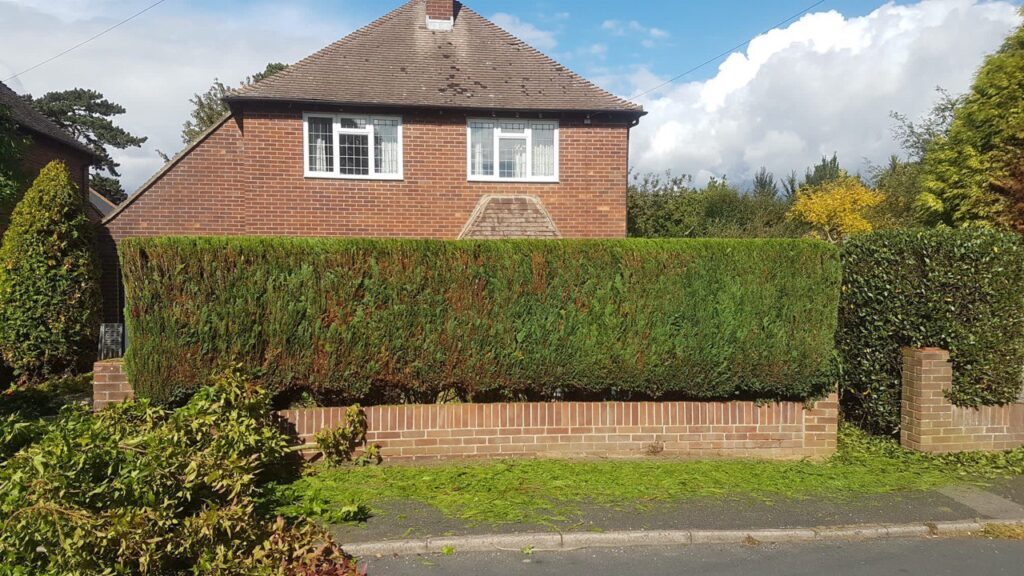Trees are remarkable organisms with their own natural healing abilities, capable of responding to injuries, environmental stresses, and even disease. However, while trees can initiate healing on their own, they often require support from professional tree surgery to fully recover and thrive. At LM Tree Surgery Chichester, we provide expert care for trees in Chichester, West Sussex, ensuring they are given the best possible chance to heal and grow. In this blog, we’ll explore how trees heal themselves naturally and how tree surgery can play a crucial role in supporting these processes.
1. Natural Healing Mechanisms of Trees
Trees have evolved unique mechanisms to heal from wounds, such as broken branches, cuts, or disease. Unlike humans, trees don’t regenerate damaged tissue. Instead, they compartmentalise the affected area, isolating the damaged part to protect the rest of the tree from further harm.
Compartmentalisation of Decay in Trees (CODIT): When a tree is wounded, it activates a process called compartmentalisation, where it forms barriers around the injury to limit the spread of decay or infection. This process involves the creation of chemical and physical barriers that prevent rot, fungi, and pathogens from spreading through the tree’s vascular system.
The Solution: While trees have evolved to compartmentalise damage, they don’t completely heal the affected area. Over time, without intervention, the damaged sections can become weak or structurally unsound. This is where tree surgery becomes essential.
2. How Tree Surgery Supports Natural Healing
Tree surgery, often referred to as arboriculture, provides the professional care trees need to manage and repair damage. The following tree surgery practices can help support a tree’s natural healing mechanisms:
a) Pruning and Removing Dead or Damaged Wood: Dead or damaged branches not only weaken the structure of the tree but also become an entry point for pests and diseases. A professional tree surgeon can prune these sections, removing the risk of further decay and allowing the tree to focus its energy on healthier parts.
b) Crown Reduction and Shaping: If a tree’s crown becomes too heavy or unbalanced, it can lead to cracks or breaks in the branches. Tree surgeons can carefully reduce the weight of the crown and reshape it, helping the tree recover from stress while maintaining structural integrity.
c) Treating Wounds and Cavities: In some cases, trees develop cavities or open wounds that become vulnerable to pests and rot. Tree surgeons can clean and treat these wounds, helping to protect the tree from further infection and allowing its natural defences to work more effectively.
The Solution: Tree surgery helps ensure that damage doesn’t escalate by giving trees the support they need to remain healthy, safe, and visually appealing.
3. Why Timely Intervention is Important
While trees have a remarkable ability to isolate damage, they are not immune to the effects of neglect or delayed care. If dead branches or open wounds are left untreated, they can lead to serious problems such as decay, pest infestations, and structural failure. Timely intervention from a qualified tree surgeon can prevent these issues from escalating, preserving the health and longevity of the tree.
The Solution: Regular inspections and maintenance by a tree surgeon help identify potential issues early, allowing for prompt action that supports the tree’s natural healing process.
4. Supporting the Health of Mature Trees
Mature trees often require additional support to maintain their health, as they are more susceptible to damage from storms, disease, and pests. By carefully managing the tree’s structure through pruning, cabling, or bracing, a tree surgeon can help older trees remain strong and resilient, reducing the risk of further damage.
The Solution: Tree surgery extends the life of mature trees by providing tailored care that supports their natural healing mechanisms while ensuring they remain structurally sound.
5. Long-Term Tree Health and Care
The relationship between tree surgery and a tree’s natural healing abilities is a long-term one. A well-cared-for tree can continue to thrive for decades, but it requires regular attention to manage any potential risks or damage that may occur over time. Tree surgeons work with homeowners and landowners to develop ongoing care plans that promote tree health, safety, and longevity.
The Solution: Long-term tree surgery maintenance helps trees grow stronger and healthier, ensuring they can continue to provide aesthetic, environmental, and structural benefits for years to come.
Conclusion: Tree Surgery as an Essential Partner in Tree Healing
While trees have natural mechanisms to protect and isolate damage, they often require professional care to fully recover and maintain their health. At LM Tree Surgery Chichester, we specialise in providing expert tree care that supports these natural processes, helping trees thrive in both residential and commercial environments in Chichester, West Sussex.
Call us on: 01243 974 685
Click here to find out more about LM Tree Surgery Chichester
Click here to complete our contact form and see how we can help with your tree’s needs.

